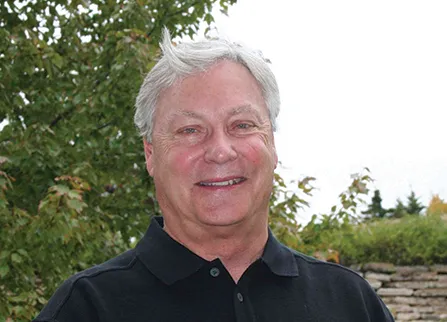Seems Kansas farmers and ranchers are always doing something in their fields, grassland and on our public roads. No matter where you travel in our state you’ll probably wind up approaching farm tractors, trucks and other large ag equipment on the roads.
Tractors, combines and other equipment traveling on our public roadways are required to display slow-moving vehicle (SMV) reflective triangles, and most must also display hazard lights. The SMV markers signify the equipment is moving at less than 25 miles per hour.
Farmers should check to make sure their SMV markers are clean, bright and still reflective. Always check to make sure reflectors and hazard lights are not blocked by equipment that is being towed. After dark, motorized equipment must have properly working headlights.
Motorists must also ensure our highways and country roads are safe. The road runs both ways.
The National Safety Council reports that even if you’re following a tractor from a distance, you’re closing the safety gap between the two of you at an average rate of about 59 feet per second. That’s the length of a football field in just five seconds.
Remember these two words while traveling on rural roads and highways – slow down. Plenty of people travel these roads today – bikers, joggers horseback riders – you name it, they’re out there.
With more and more people from urban areas moving to rural areas, there’s more traffic on our roads and many of them don’t have shoulders to pull over on. That’s one more reason to slow down and proceed with caution.
Motorists remember, relax while driving no matter which roads you travel – busy Interstate highways or a nearly deserted country road. Enjoy the beautiful countryside – but be alert. Impatience is often partly responsible for accidents involving farm vehicles.
While it is understandable motorists become annoyed when caught behind slow-moving equipment, they need to understand such delays are unavoidable, particularly during busy farm seasons like planting and harvest.
Today’s farmers continue to farm more acres. Often their fields are scattered throughout the county. There is no way most farmers can do their job without driving public roads. Just like so many motorists, farmers/ranchers must travel to their place of business.
Practice courtesy. Give them a break. Give yourself a break. And in doing so, they’ll give you a break as well.
By John Schlageck, Kansas Farm Bureau
John Schlageck is a leading commentator on agriculture and rural Kansas. Born and raised on a diversified farm in northwestern Kansas, his writing reflects a lifetime of experience, knowledge and passion.



